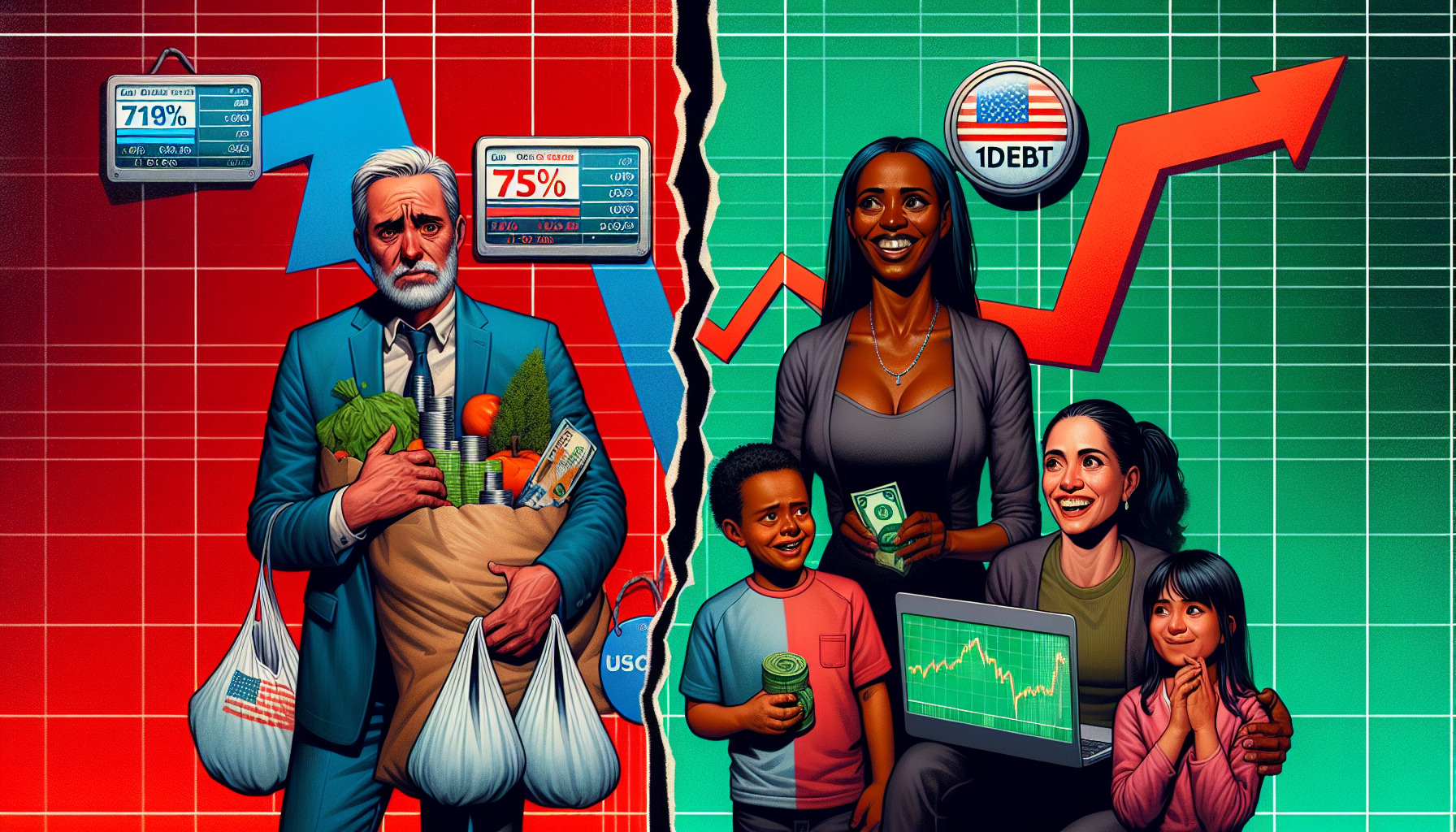
tl;dr
A stark contrast emerges between America's struggling consumers and buoyant stock investors, as declining sentiment and rising fears of unemployment clash with record market highs. The divide highlights growing economic fragility and questions the sustainability of growth in a divided nation.
The economic outlook for most Americans has grown increasingly bleak, with rising concerns over job security and persistent inflation dragging down consumer sentiment. However, a distinct divide has emerged, as investors with substantial stock portfolios remain buoyant, reflecting a growing disconnect between the broader public and those deeply entrenched in the stock market.
According to the University of Michigan’s Consumer Sentiment Index, overall confidence dipped 5% in September, reaching 55.1—the lowest level since April and May of this year. The decline comes as 65% of respondents expressed fears of rising unemployment, a sharp increase from 35% a year ago. Meanwhile, the proportion of consumers worried about losing their jobs hit a peak, signaling heightened anxiety about the labor market. Despite the stock market hitting record highs in recent weeks, these concerns underscore a broader sense of economic fragility.
The data reveals a stark contrast between the general population and those with significant equity holdings. While most Americans grapple with financial uncertainty, investors with large stock portfolios have maintained a more optimistic outlook. Jim Baird, chief investment officer at Plante Moran Financial Advisors, noted that this disparity stems from the tangible benefits many investors have reaped from the market’s recent gains. “Heavy stock investors, who have seen their portfolios grow, remain more upbeat,” he wrote, highlighting how wealth accumulation through equities can insulate individuals from broader economic turbulence.
Inflation and stagnant income growth further complicate the picture. Although inflation expectations softened slightly in September, 44% of respondents cited persistent price pressures as a threat to their savings—a figure reaching a 12-month high. Oren Klachkin, an economist at Nationwide, emphasized that slower income growth and rising costs could curb consumer spending, even as August data showed resilience in expenditures. “For many, robust spending will be difficult to sustain,” said Joanne Hsu, director of the Michigan survey, pointing to a fragile economic balance.
The divergence in sentiment raises questions about the broader implications for the economy. Consumer spending, a critical driver of growth, relies on confidence. If the majority of Americans continue to feel financially vulnerable, sustained economic expansion may remain elusive. Meanwhile, the optimism of stock holders could fuel further market gains, but at the risk of exacerbating wealth inequality.
As the Federal Reserve navigates the dual challenges of inflation and employment, the gap between public sentiment and investor confidence may become a defining feature of the economic landscape. For now, the data suggests a nation at a crossroads—caught between the anxieties of everyday consumers and the resilience of those with the means to weather the storm.